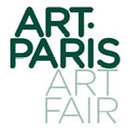ABOVE GROUND_08/ ÜBER TAGE_08
|
Joanna Rajkowska, The Uhyst Refugee Asylum, 2008 |
ABOVE GROUND_08/ ÜBER TAGE_08
|
Info
opening July 12th, 2008
Contact
Address
http://www.ueber-tage.de
On view in the villages of Uhyst, Boxberg & Nochten (near Bautzen/ Saxony/Germany)
D – 02999 Uhyst
D -02943 Boxberg
Germany
ABOVE GROUND_08/ ÜBER TAGE_08
Public Art projects for the Lausitz Lake District
featuring:
Rupprecht Matthies (Hamburg),
Joanna Rajkowska (Warsaw)
Bertram Weisshaar (Leipzig)
curated by: Susanne Altmann
The public projects of ÜBER TAGE/ ABOVE GROUND take place in one of Germany's largest former brown coal mining sites, located between the city of Dresden and the Polish border. During the course of the last last three years, one of the biggest artificial lakes of the region has emerged in vaste, desert-like stretch of land, still dominated by the view of the mighty Boxberg powerplant. In order to recultivate this area, the adjoining communities commissioned art projects that started last year with works by Juliane Köhler (Dresden/Tokyo) and Stefan Schröder (Oslo), that are still on view.
ÜBER TAGE/ ABOVE GROUND aims to integrate contemporary art in a careful and responsible manner, understanding the existing landscape as interplay between natural, cultural and social spaces. ÜBER TAGE/ABOVE GROUND combines temporary interventions with permanent artistic comments, including the ongoing transformations of the region and meeting the callenges of a rural environment with participatory and relational strategies.
In 2008, Hamburg-based artist Rupprecht Matthies marked the bicycle trail between the villages of Boxberg and Nochten with six legible sculptures, that relate to the almost extinct Sorabian language, an old Slavonic idiom still used by the small ethnic minority of the Sorbs. With these columns, made of word objects, he created a walk-in dictionary, titled EX SORABIA – in close collaboration with the local youth club and the country-women's association. In their personal handwriting, they all contributed words and phrases that represent Sorabian culture as a vital characteristic of the region.
Another, more controversial approach had been undertaken by Polish artist Joanna Rajkowska. She draws our attentions to the many abandoned buildings that are hoping for investors, in the wake of the ongoing revitalization. Her project The Uhyst Refugee Asylum gives a vision, that contextualizes the development of the region within global migratory movements and designates one of these empty premises as a future refugee shelter: attacking the fortress Europe. Interestingly, this site used to be a renowned boarding school for European noble offspring in the 18th century; among its students the pioneering German landscape artist Fuerst Hermann von Pueckler, who cultivated his first garden patch here.
Bertram Weisshaar from Leipzig considers himself a „strollologist'. For all those interested in local history, he offers three guided walking tours that lead to secret as well as characteristic places in the village of Uhyst and its surroundings, shedding a new light onto the changes that followed the mining industry. These walks, titled „waiting and walking', demand for the active participation of locals and visitors. There will even be an art exhibtion with paintings loaned from several Uhyst households.
commissioned by 'Zweckverband Landschaftspark Bärwalder See'
Production: Reinhardt v. Bergen-Wedemeyer
The project by Rupprecht Matthies will be on permanent display. For more info about the precise locations, please check www.ueber-tage.de. The project by Joanna Rajkowska will be on display until 2009
Another public walking tour by Bertram Weisshaar will take place on August, 31st, 2008 at 2 p.m., duration: approx. 2 hrs, meeting place at the Dannenberghaus in Uhyst, next to the church
funded by
Kulturstiftung des Freistaats Sachsen











